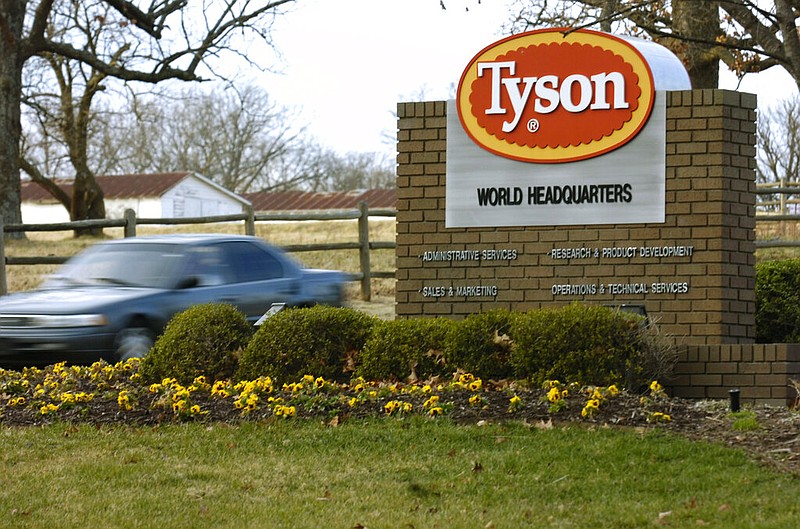Tyson Foods has set a goal of achieving net-zero greenhouse gas emissions across its operations and supply chain by 2050.
The company joins a growing group of airlines, banks, software firms and others taking corporate action in the face of a worsening climate crisis. Tyson released its latest 2020 sustainability report on Wednesday, detailing its progress and plans to reduce carbon emissions and water usage, among other efforts.
The move to "net zero" is an expansion of the company's earlier target to reduce greenhouse gas emissions 30% by 2030. It was one of the first targets by a meat-producing company to be accepted by the Science Based Targets initiative. It's also consistent with the Paris Agreement's goal of limiting global warming to 1.5 degrees Celsius.
In recent years, Tyson's sustainability reports have tracked the company's progress toward reaching its environmental goals, as well as animal welfare and workplace goals.
"We hope to continue to push the industry as a leader and remain committed to making a positive impact on our planet," John R. Tyson, chief sustainability officer and great-grandson of the company's founder, said in a written statement.
In a year mired by covid-19, Tyson met or exceeded most of its goals, such as reducing the number of recorded workplace injuries; completing its first Global Welfare Assessment of its poultry, beef and pork supply chains; and using recycled paperboard for its Jimmy Dean products. It also created a road map to achieve its 30% greenhouse gas reduction target by 2030, but it did not report an update.
The company fell short in a few categories related to improving the environment. According to the report, Tyson reduced its water intensity by 7.7% since 2015, instead of a targeted 12%. It also had a goal of increasing sustainable land stewardship practices on 2 million acres of row crop-corn by 2020. To date, 408,000 acres of land have been enrolled.
Tyson's worker retention rate increased 1% during 2020 and fell short of its 10% target as thousands of plant workers grew ill from the coronavirus and as absenteeism remained a problem.
All things considered, Tyson's net-zero goal is ambitious and meaningful, said Alan Ellstrand, associate dean for programs and research in the Walton College of Business at the University of Arkansas, Fayetteville.
"If they can do it, it's going to have an important impact," he said.
Agriculture, in general, is a significant contributor of greenhouse gases, from synthetic fertilizers and manure management to methane. According to the U.S. Environmental Protection Agency, methane from ruminant animals accounts for more than a quarter of the industry's emissions.
But as companies like United Airlines, Bank of America and others move to become "net zero" and "carbon neutral," concerns arise over how legitimate the changes can be with no government oversight.
Last year, BlackRock, the world's largest asset manager, informed clients that it would divest from companies that generate more than 25% of their revenue from thermal coal production by the middle of 2020. It still has about $85 billion indirectly invested in coal companies and funds several fossil fuel expansion projects.
The goals are aspirational and take time, but whether they get there is really hard to say, Ellstrand said.
In some ways, he said, sustainability goals are a defense mechanism for companies trying to forestall the government from setting environmental standards that are more difficult to achieve. On the other hand, the alternative is grim if corporations don't act.
One study says that a third of the global population -- 3.5 billion people -- could be living in temperatures inhospitable to human life in the next 50 years. According to the study published last year by the National Academy of Sciences, billions of people could be living in climates where the average annual temperature is 86 degrees Fahrenheit. Most humans have lived in places with an average temperature between 51 and 59 degrees Fahrenheit.
Another publication says that as temperatures rise and rainfall patterns alter drastically, the world's food production will be at risk if greenhouse gas emissions continue climbing at their current rate.
